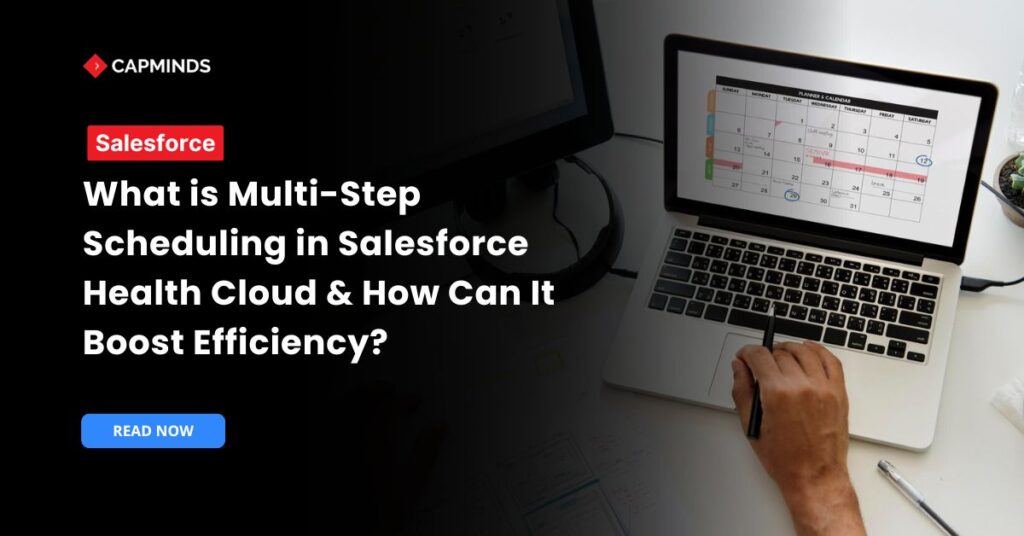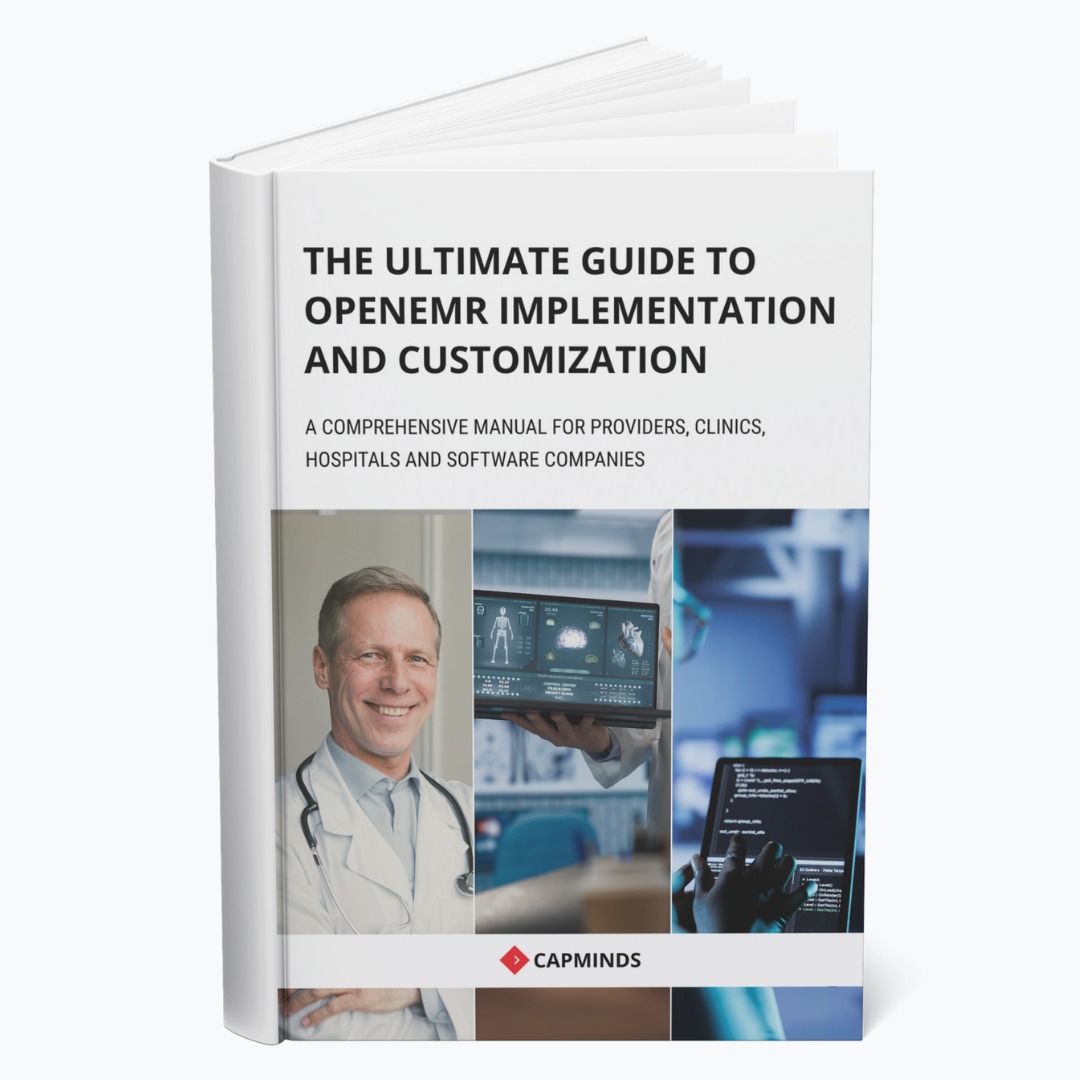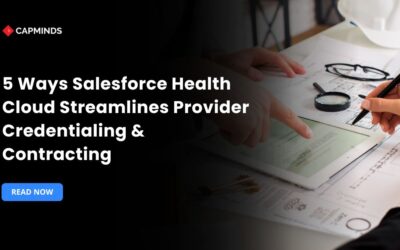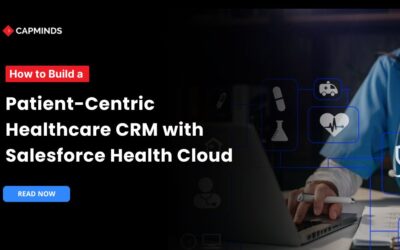What is Multi-Step Scheduling in Salesforce Health Cloud & How Can It Boost Efficiency?
Scheduling patient appointments is often complex, and coordinating multiple visits across various departments can be challenging. When appointments are delayed or missed, treatment plans can be disrupted, leading to inefficiencies and increased costs. Additionally, patient satisfaction may decline due to these issues.
To address these challenges, Salesforce Health Cloud offers a solution. Specifically, its Multi-Step Scheduling feature streamlines appointment coordination.
This tool works by organizing related appointments into a cohesive workflow. As a result, administrative burdens are significantly reduced. Ultimately, patients receive timely and well-coordinated care. In this blog, we have shared details about the multi-step scheduling in Salesforce Health Cloud.
What is Multi-Step Scheduling in Salesforce Health Cloud?
Multi-step scheduling simplifies booking multiple appointments within one workflow. It is designed for advanced therapy and complex medical treatments. It helps healthcare providers schedule multiple related appointments at once. This feature is especially useful for:
- Patients undergoing complex treatments that require multiple steps
- Coordinating appointments across different locations
- Reducing scheduling conflicts and administrative work for healthcare providers.
Instead of booking each appointment separately, Multi-Step Scheduling streamlines the process, ensuring that all necessary procedures are scheduled in the correct order with minimal effort.
Key Components of Multi-Step Scheduling
1. Work Procedures and Steps
The system structures treatments into stages, steps, and tasks. First, stages represent major phases like diagnosis or treatment. Next, steps include specific actions within each stage.
Then, tasks define the individual activities required to complete each step. By following this hierarchy, a clear and organized workflow is ensured. Consequently, it facilitates efficient scheduling and execution of treatment plans.
2. Service Territories
Service territories define where specific procedures occur. To coordinate appointments, the system maps these locations. As a result, patients are scheduled at the correct facilities.
By doing so, it prevents errors related to location mismatches. Additionally, efficient use of resources across various sites is achieved.
3. Lead Times and Dependencies
Certain treatments require waiting periods between steps. To address this, the system accounts for lead times automatically. By managing dependencies, ensures procedures are scheduled correctly.
Thus, scheduling conflicts are prevented and sequencing is maintained. Ultimately, patients receive care in the correct order without unnecessary delays.
How Multi-Step Scheduling Works
1. Booking multiple related appointments
Schedulers can book all necessary appointments in one process. The system checks availability across departments and locations.
It suggests optimal time slots for each procedure. This streamlines the scheduling process significantly. It reduces the time and effort required for manual booking.
2. Managing dependencies and lead times
The system incorporates required waiting periods between steps. It ensures appointments are scheduled in the correct sequence. This prevents errors and maintains treatment integrity. Schedulers can trust the system to manage complex timelines. Patients receive care at appropriate intervals.
3. Rescheduling and cancellations
If changes are needed, the system offers flexible options. Full chain rescheduling adjusts all subsequent appointments. Partial rescheduling modifies only selected appointments.
This flexibility minimizes disruptions to treatment plans. It ensures continuity of care despite scheduling changes.
4. Manual slot selection for complex cases
In complex scenarios, automated scheduling may not suffice. Schedulers can manually select time slots as needed. This ensures appointments meet specific patient requirements. The system still enforces scheduling rules during manual selection. This maintains overall workflow integrity.
5. Automating scheduling to reduce administrative workload
Multi-Step Scheduling reduces manual work for healthcare staff. Automated scheduling saves time and minimizes scheduling errors. It allows providers to focus more on patient care than paperwork.
This leads to improved efficiency and better healthcare management.
Related: Top 7 Features of Salesforce Health Cloud You Should Know
Benefits of Multi-Step Scheduling for Healthcare Providers
1. Improved efficiency in healthcare workflows
- Streamlined scheduling processes lead to better workflow efficiency. Staff spend less time coordinating appointments.
- Resources are utilized more effectively. This results in smoother healthcare operations. Patients experience fewer delays in their care.
2. Enhanced patient experience
- Patients benefit from well-organized treatment schedules. They experience fewer scheduling conflicts and delays.
- This leads to higher satisfaction with their care. Clear schedules reduce patient anxiety. Overall, the patient experience is significantly improved.
3. Optimized resource utilization
- The system ensures optimal use of healthcare resources.
- Facilities and staff are scheduled efficiently.
- This reduces idle time and maximizes productivity. It leads to cost savings for healthcare organizations. Resources are allocated where they are needed most.
4. Reduced scheduling conflicts and delays
- Automated scheduling minimizes the risk of conflicts.
- Lead times and dependencies are managed effectively.
- This ensures timely delivery of care. Patients receive treatments without unnecessary delays. The overall reliability of scheduling is enhanced.
5. Better coordination between departments and facilities
- The system facilitates communication across various departments. Appointments are coordinated between different facilities seamlessly.
- This ensures a cohesive treatment process. Patients move through their care continuum smoothly. Inter-departmental collaboration is significantly improved.
Related: How Salesforce Health Cloud Outperforms Traditional Healthcare CRMs
Challenges of Implementing Multi-Step Scheduling
1. Compatibility with existing EHR and scheduling platforms
Many healthcare providers use different scheduling and EHR systems. As a result, these systems often lack direct communication, causing data synchronization issues. When integration is not seamless, appointments may not update in real time. Consequently, this leads to:
- Double bookings
- Missing appointments
- Scheduling conflicts.
Over time, outdated records can disrupt workflows and confuse healthcare staff. To fix these issues, additional time and administrative effort are required. Thus, healthcare providers need a solution that connects all platforms seamlessly.
However, legacy systems may lack API connectivity for automated data transfer. Because of this, integration becomes complex and requires IT expertise for smooth operation. If not addressed properly, data mismatches can impact patient care quality.
2. Resistance to new technology and workflow changes
Healthcare employees become comfortable with familiar scheduling tools and methods. Therefore, learning a new system takes time and effort from staff. In many cases, workers fear losing efficiency during the transition phase. If the system is not user-friendly, staff may resist change.
Moreover, a lack of training can create frustration and scheduling mistakes. To prevent such issues, staff members need proper onboarding to understand system functionality. Without this:
- Errors in booking
- Rescheduling may increase.
Additionally, some managers hesitate to move from manual scheduling to automation. Since adapting to new workflows is challenging, leadership support and clear guidance are necessary. Otherwise, employees may avoid fully using the system.
3. Ensuring HIPAA and healthcare regulatory compliance
Patient scheduling data must follow strict security and privacy regulations. Unauthorized access to patient records can result in legal consequences. Healthcare systems need strong encryption to protect sensitive information. Without proper security, data leaks could expose personal medical details.
Regulatory agencies require compliance with HIPAA and security standards. Healthcare providers must follow rules for storing and managing data. System vulnerabilities increase the risk of cyberattacks and breaches. Frequent audits ensure that security measures remain up to date.
Without compliance, organizations may face penalties or reputational damage. Healthcare leaders must prioritize security during system implementation.
4. Handling real-time appointment changes and data updates
Healthcare scheduling involves frequent changes due to emergencies and delays. Last-minute updates must sync across departments without disrupting workflows. Without automation, staff must manually adjust schedules for every change. This process creates:
- Confusion
- Increases the risk of errors
- Appointment overlaps
- Time conflicts.
Without a reliable system, real-time updates become difficult to manage. Patients expect accurate appointment information without last-minute disruptions. A flexible system must accommodate sudden changes efficiently.
Without an automated update process, staff workload increases significantly. Healthcare providers need a system that supports instant scheduling changes.
Solutions to Overcome Challenges
1. Seamless System Integration
Healthcare organizations must integrate scheduling tools with existing systems efficiently. To achieve this, API-based solutions allow platforms to communicate without manual data entry. Since disconnected systems lead to errors, connecting EHR systems with scheduling software reduces data mismatches.
If direct integration is not possible, middleware solutions help link old and new systems without disruptions. To avoid unexpected failures, running pilot tests ensures integration issues are identified early. For smooth operation, IT teams must configure systems for real-time synchronization.
Since outdated software causes inefficiencies, regular updates keep the integration stable and secure. To prevent system failures, testing different scenarios helps prevent failures during actual use.
When staff are well-informed, training them on system integration improves daily scheduling workflows. Ultimately, a well-integrated platform ensures accurate data flow between departments.
Related: 8 Simple Step Process to Integrate Salesforce Health Cloud with Any EHR
2. Comprehensive Staff Training & Change Management
Healthcare staff need structured training programs before using the system. Since practical experience improves understanding, hands-on sessions help employees understand new scheduling features effectively. With clear instructions, step-by-step guidance reduces hesitation in using the new system.
To ensure team efficiency, role-based training ensures that each team member understands responsibilities. When employees recognize its benefits, automation helps reduce workload and errors.
For long-term adoption, providing user guides and workshops makes learning easier. A gradual approach is best, so phased implementation prevents staff from feeling overwhelmed during adoption. Since ongoing support is essential, support teams should be available for troubleshooting and questions.
Additionally, encouraging feedback helps improve training and user confidence. With proper training, a well-trained team ensures accurate and efficient scheduling operations.
3. Enhancing Data Security & Compliance
Healthcare systems must follow strict data security policies at all times. For this reason, encryption methods protect patient information from unauthorized access and breaches. To maintain confidentiality, access controls should limit scheduling data to authorized personnel only.
Regular security checks are important so that providers can identify weaknesses before they become threats. Because employees handle sensitive data, staff must be trained to follow compliance best practices daily. Since HIPAA regulations require secure storage, organizations must protect patient records properly.
To track suspicious activity, logging system activity helps monitor unauthorized access attempts. If data is lost, secure cloud storage prevents accidental data loss or corruption.
For additional protection, data backup ensures scheduling records remain accessible when needed. With strong security measures, both patients and healthcare organizations remain protected.
4. Optimizing High-Volume Data Handling
Healthcare facilities process thousands of scheduling updates each day. To manage this effectively, AI-powered tools help handle large scheduling volumes quickly. By analyzing patterns, automated systems suggest the best appointment slots.
With real-time connectivity, synchronization keeps schedule changes updated across all departments. To avoid miscommunication, staff notifications ensure teams stay informed about last-minute changes. Since manual updates can cause delays, cloud-based databases allow instant updates without errors.
For better forecasting, predictive scheduling analyzes past trends to improve appointment management. To reduce missed appointments:
- Send automated alerts to notify patients
- Also for providers about schedule modifications immediately.
With effective scheduling, efficient data handling prevents conflicts and overbooked appointment slots. Ultimately, automated scheduling reduces staff workload and improves scheduling efficiency.
Salesforce Health Cloud Solution From CapMinds
CapMinds offers a tailored Salesforce Health Cloud solution to address the unique needs of healthcare organizations, ensuring streamlined workflows, improved patient outcomes, and operational efficiency.
With CapMinds, healthcare providers can overcome the complexities of Salesforce Health Cloud and unlock its full potential through:
- We adopt Salesforce Health Cloud to your organization’s specific needs, enhancing functionality and usability.
- CapMinds ensures smooth integration with third-party systems like EHRs, billing systems, and patient engagement tools.
- Our hands-on training empowers your care teams to maximize the potential of Salesforce Health Cloud.
- We provide continuous updates, performance optimization, and issue resolution to keep your systems running efficiently.
- Ensure accurate and secure patient data migration with CapMinds’ expert-led processes.
Why Choose CapMinds?
CapMinds addresses the common challenges of Salesforce Health Cloud, such as bulk data performance issues, extensive customization needs, and integration complexities.
By leveraging pre-configured templates, scalable frameworks, and advanced integration tools, we simplify implementation and customization, ensuring a hassle-free experience for healthcare organizations.
Contact CapMinds to discover how our Salesforce Health Cloud solution can drive efficiency, improve patient care, and help your organization achieve its healthcare goals.
Let us guide you to a seamless care management experience.




